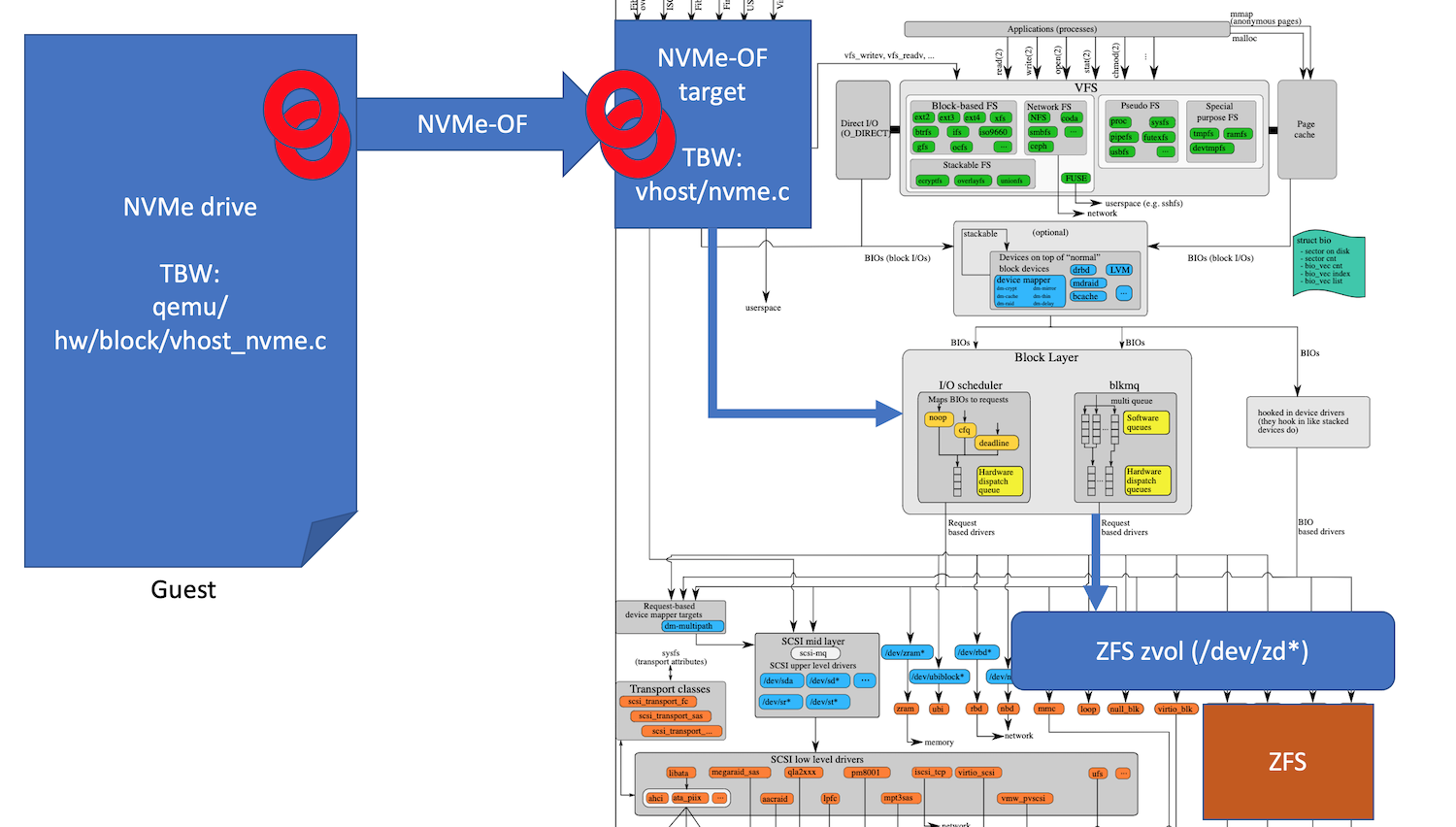Background and motivation
When it comes to storage, EVE's primary goal is to take raw, mutable storage devices (SSD, eMMC, NVMe drives, etc.) and provide:
- file system abstraction for all system-level services running on EVE so that they can have some amount of mutable state (e.g. a newlog service requiring a mutable, persistent storage to keep gzip'ed log files for as long as it takes to transmit them back to the controller)
- mutable layers supporting OCI containers
- mutable disk images supporting VMs
The current implementation of mutable storage management in EVE is rather simplistic: it takes a single device, formats it with ext4 (with support for encryption turned on) and makes the resulting filesystem available under /persist. This satisfies #1 in the most basic POSIX filesystem sense and it makes both #2 and #3 be handled by qemu emulating either POSIX filesystem or block devices on top of raw qcow2/raw files under /persist. While this approach got us this far, the following areas clearly need improvement:
...
After all, Linux kernel already has a very robust and well optimized BIO layer (with battle tested I/O schedulers) and a number of in-kernel targets that can turn guest I/O traffic into Linux kernel native BIO requests. After considering two of these targets: SCSI and NVMe, we've decided to focus on NVMe as it is a much cleaner protocol with a huge upside of being extremely well suited for parallelization (32 I/O queues for SCSI vs. 64k queues for NVMe).
Proposal
Our proposal is to standardize on NVMe-OF protocol as a Guest ↔ Host storage I/O communication protocol and use existing in-kernel NVMe-OF target to translate it into the native Linux kernel BIO requests. Once that is done, BIO requests can flow into either LVM or ZFS block devices with those providing all the features like thin provisioning, compression and encryption that are missing in the raw block device implementation. This will get us on-par with the current qemu implementation and its usage of qcow2 files for backing store, but may require either on-the-fly conversion of qcow2 images OR agreeing to use other image formats for initial content trees (e.g. ZFS snapshot streams). The overall flow of block I/O traffic can be summarized in the following picture:
While a lot of the building blocks required for this are already available in upstream Linux kernel and qemu the following are still missing:
- qemu NVMe driver that will route guest's NVMe traffic to virtio fabric (although previous attempts at upstreaming this exist)
- virtio fabric driver in the Linux kernel's NVMe target (although previous attempts at upstreaming this exist and there's a very similar SCSI driver already upstreamed)
Discussion
The nice property of this design is that we can start with independent bits and pieces and keen an eye on performance. For example, without writing any additional code we can send NVMe traffic via TCP from our guests to the host helping us test assumptions about scalability. This is expected to be much slower than virtio/vhost implementation, but is available in a stock kernel today.
...
